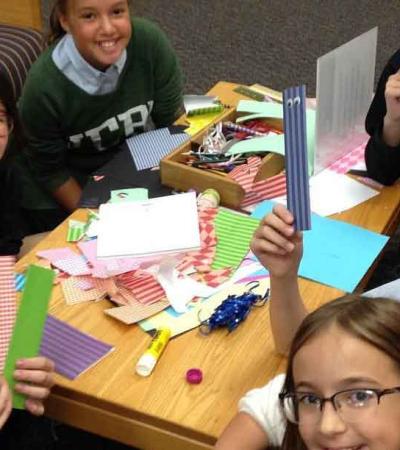A few months ago on Programming Librarian, I talked about asking a trivia question as part of your passive programming. Now, I've taken it a step further to create a Trivia Master Challenge that encourages students to search the library’s catalog, explore our nonfiction section, and learn how to search successfully within a book.

The problem: Wait, there’s more?
A few years ago, my school library underwent a renovation that resulted in the majority of our physical collection being hidden around a corner. As a result, I often got surprised reactions out of students who didn’t know that there was an entire other section of the library that they couldn’t immediately see. I needed a way to get students behind the wall and into the nonfiction section more regularly than they were being brought in for classes.
The solution: The Trivia Master Challenge
When I watched this webinar about using trivia to increase ebook use, I knew this could help me solve the problem with my physical collection, so I adapted it to my needs.
Each week, I publicize a new question. Students have to come to the library, search the catalog for a book about that subject, then find the answer in a book. They submit their answer online, including the title, author and page number where they found it. This way, they still have to use the library’s resources, even if they already know the answer.
I take all the correct answers each week and do a drawing for our Trivia Masters, who then get a prize.
How it works
Make the questions. Because my priority is for students to explore the nonfiction section, I try to choose a question whose answer can be found in multiple books within the library. This means that I also spot-check the winner's sources.
If your priority is to get students using a specific database, you can get more specific with the sources you require; you could even ask students to submit a link where they found the info. I try to give a bit of background information with each question, so students who may be unfamiliar with the topic have a starting place. For example, instead of just asking, “Where is Mount Saint Helen?,” I will say “Mount Saint Helen is the most active volcano in North America. Which state is it in?” Keep track of current and past questions in a spreadsheet to ensure no repeats.
Create a place for students to submit their answers. I use a Google form for answer submissions. Students are required to put their name, the trivia answer, and the title, author and page number where they found the answer. Each week, I just edit the description field to include the new question. Plus, a Google form allows me to download the submissions as a spreadsheet to make drawing a winner easier. I post this form on the library’s website.
If you don’t want to go digital, you could have students write down their answer and submit it in a fishbowl in the library.
Publicize it. I announce last week’s winner along with the new question each Monday morning during our middle school’s morning meeting. I also put the question on the library’s website and am hoping to get a whiteboard to put on our front desk where I can write the question.
Offer incentives. I have a prize box of pens, pencils, highlighters and other school supplies that the Trivia Masters can pick from. For some free incentives, offer "Trivia Master" stickers that you can make from everyday printable labels, or let last week’s Trivia Master draw the next week’s winner.
My weekly Trivia Master Challenge has regularly brought students into the library — and, more importantly, into the nonfiction section — each week. Pick a priority area in your library and get students there with your own trivia challenge!



